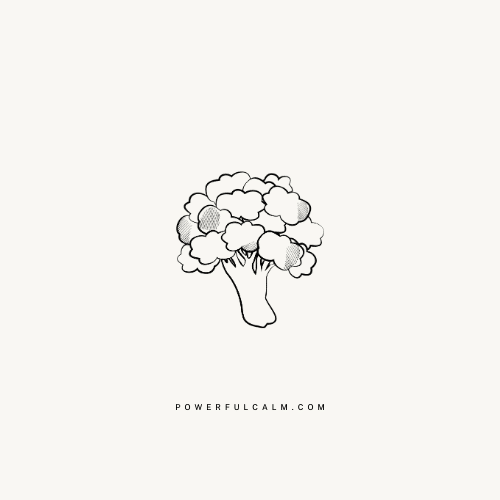How to help your brain create shortcuts for happiness.
“Have you found happiness?” Whenever I hear this question, I think of it as asking about something lost and, if so, where it could be. But happiness isn’t something you need to search for, like a long-lost treasure; it’s a matter of learning skills to train your brain for happiness.
When we talk about “finding” happiness, the assumption is usually that you’re not happy; it’s something you’re missing and you should look for it like a 6-week-old puppy who excitedly runs out the front door and doesn’t know his way home quite yet. But it’s not…
Happiness is something we create.
Like anything built to last, happiness needs a strong foundation before you add the details that make it uniquely your own.
The foundation for happiness is built with a specific set of skills—happiness skills. These skills can be brain-based, emotional, or behavioral, including positive self-talk, gratitude, self-compassion, and many others.
If you practice these skills enough, happiness will become second nature. You won’t need to consider them because they become how you live your life.
How do you train your brain for happiness so it becomes second nature?
When you learned to ride a bike, it was probably really hard at first. You practiced how to balance and peddling became more comfortable the more you practiced.
Now, when you ride a bike, you don’t think about how to ride it or focus on keeping your balance; it feels effortless—almost automatic.
Training your brain for happiness works the same way. So, when you have the right skills and practice them enough, they become automatic.
How does your brain create new habits?
The thing about your brain is that it does a lot and it works hard at it. When your brain has a task that it has to do frequently (riding the bike), it creates shortcuts that save energy and time so you have what you need as quickly as possible. This is why things that felt impossible before you learned how to do them, like starting and completing a task, now feel easy. It is so easy that you most likely don’t consider it a skill you learned.
The same thing happens when you train your brain for happiness.
For instance, most of us aren’t born with skills like gratitude or mindfulness. You learn these skills when you train your brain to create shortcuts, so you recognize opportunities for gratitude or mindfulness when they happen and apply them. Each time you practice, it gets easier and more accessible, just like riding a bike!
Happiness skills enable you to respond to life’s ups with excitement, joy, and positivity. They also help you build resilience when life gets complicated because we all experience challenges, disappointments and grief.
At this point, your only obstacle is building a solid foundation to train your brain for happiness.
Here are the three fundamentals to build a strong foundation:
1. Prioritize the skills that make a difference.
Let’s use math as an example. Pretend you moved to a new school. Because I don’t know what you learned at your previous school, I would give you a placement test to determine which skills you have mastered and still need to learn. You are ready for algebra, so I put you in an algebra class. Great – you’re all set!
But what if I didn’t test your skill level? Instead, I just put you in a calculus class. Most likely, you’d struggle.
Or maybe you were ready for calculus and I put you in an algebra class. More than likely, you’d be bored.
Or maybe you skipped some steps and don’t know multiplication and division yet. Then you’d have a heck of a time keeping up with either algebra or calculus; I know I would have! Learning the right skills is essential to train your brain for practical happiness skills.
Some practical happiness skills are:
- Mindful meditation
- Gratitude Journal
- Mindful eating
- Reframing negative experiences
- Optimism practice and positive self-talk
- Journaling and self-compassion practice
- Clear communication
- Emotional Mastery
- Exercise
- Setting boundaries
2. Practice makes progress!
When was the last time you learned a new skill—maybe learning a new language, playing an instrument, or enjoying a new craft? Did it take instruction, trial and error and learning until you reached mastery?
How long until you felt competent, even good at it? If you are average, learning a new skill takes time and effort.
But I do have some good news. You can make the happiness process faster by correctly practicing the right skills. More specifically, you can practice the skills that have the most significant impact on happiness and practice them in the most enjoyable ways for you. This way, you’ll make more progress in less time and be less likely to quit along the way.
3. Progress
In the happiness programs I’ve taught, I am amazed at how quickly people progress when they train their brains for happiness. Their brains are now wired to increase awareness of how to focus on the possibilities for growth, kindness, compassion and gratitude – all essential ingredients for happiness. But just when people start to feel comfortable with their new happiness skills, they hit a brick wall.
Why does this happen? After prioritizing skills and practicing them for a while, you can hit a plateau or backslide to where you started. This is normal when you learn new habits. The phenomenon is known as the hedonic treadmill. You are forever running and not getting anywhere – you aren’t moving forward. To solve this problem, get off the treadmill and switch things up regularly. Learn new skills and change up your “go-to” solutions to keep things fresh as you expand your skill set.
Imagine this. Returning to our math example, you learn addition in the first grade.
Then, in second grade, you learn addition again.
And in the third grade, guess what you learn? Addition.
To make progress and improve, you have to switch things up now and again. So, when you feel confident with a happiness skill or feel backsliding, see what else you need to learn and challenge yourself.



